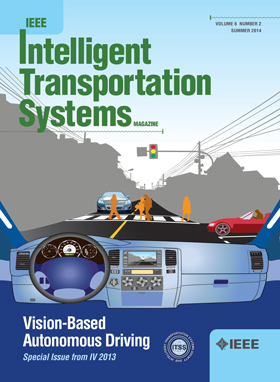以铁路运力和客运服务为导向的列车进站规划与旅客分配一体化调度
IF 8.4
1区 工程技术
Q1 ENGINEERING, CIVIL
IEEE Transactions on Intelligent Transportation Systems
Pub Date : 2025-06-11
DOI:10.1109/TITS.2025.3574789
引用次数: 0
摘要
在铁路运营规划过程中,既要考虑铁路运力,又要考虑始发目的地旅客需求。停靠计划在生成最大铁路运力的列车时刻表和确保向旅客提供高质量服务方面起着至关重要的作用。因此,我们正在解决的挑战是优化一组列车在一条铁路线上的停靠计划和时间表,重点是铁路容量估计和乘客需求满意度。为了提供真实准确的乘客分布,我们充分考虑了不同类别乘客的偏好。用经典的时空网络描述了这一综合问题,在此基础上建立了高速铁路列车占用时间最小化和客运公里数最大化的数学模型。提出了一种基于拉格朗日松弛(LR)的分解方法,将综合调度问题分解为两个子问题:列车调度子问题和车站规划及乘客分配子问题。设计了一种基于遗传算法的启发式方法来获得可行解。所提出的模型和方法可以有效地生成良好的解。在中国京沪高速铁路上进行了一系列的实际实例,实验结果表明了优化停车计划的好处。通过比较不同停车总数、异质和同质情况下的结果,讨论了其他相关分析。本文章由计算机程序翻译,如有差异,请以英文原文为准。
Train Timetabling With Stop Planning and Passenger Distributing Integration Orientated by Railway Capacity and Passenger Service
In the process of railway operation planning, it is essential to take into account both railway capacity and origin to destination (OD) passenger demand. Stop plan plays a vital role in generating a train timetable with maximum railway capacity and ensuring high-quality service to transport passengers. Therefore, we are addressing the challenge of optimizing both the stop plan and timetable for a group of trains on a railway line, focusing on railway capacity estimation and passenger demand satisfaction. To provide realistic and precise passenger distribution, the preferences of different categories of passengers are given due regard. A classic time-space network describes the integrated problem, based on which a mathematical model is formulated to minimize train occupancy time on the high-speed railway line and maximize passenger kilometers at the same time. A decomposition approach based on Lagrangian relaxation (LR) is suggested to address the problem, which decomposes the integrated scheduling problem into two sub-problems: a train timetabling sub-problem, and a stop planning and passenger distributing sub-problem by dualizing constraints linking the two. A heuristic approach based on genetic algorithms is designed to obtain feasible solutions. The proposed model and approach are shown to generate good solutions efficiently. A series of real-world instances are conducted on the Beijing-Shanghai high-speed railway line in China, and the experimental outcomes show the benefits of optimizing the stop plan. Other related analyses are discussed by comparing results with different total number of stops, heterogeneous and homogeneous cases.
求助全文
通过发布文献求助,成功后即可免费获取论文全文。
去求助
来源期刊

IEEE Transactions on Intelligent Transportation Systems
工程技术-工程:电子与电气
CiteScore
14.80
自引率
12.90%
发文量
1872
审稿时长
7.5 months
期刊介绍:
The theoretical, experimental and operational aspects of electrical and electronics engineering and information technologies as applied to Intelligent Transportation Systems (ITS). Intelligent Transportation Systems are defined as those systems utilizing synergistic technologies and systems engineering concepts to develop and improve transportation systems of all kinds. The scope of this interdisciplinary activity includes the promotion, consolidation and coordination of ITS technical activities among IEEE entities, and providing a focus for cooperative activities, both internally and externally.
 求助内容:
求助内容: 应助结果提醒方式:
应助结果提醒方式:


